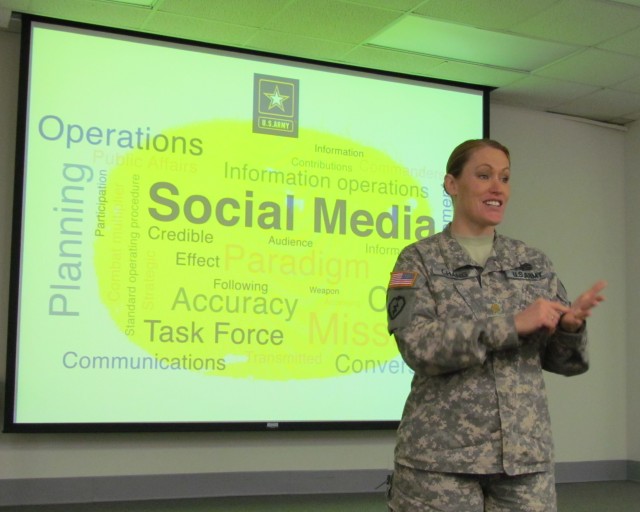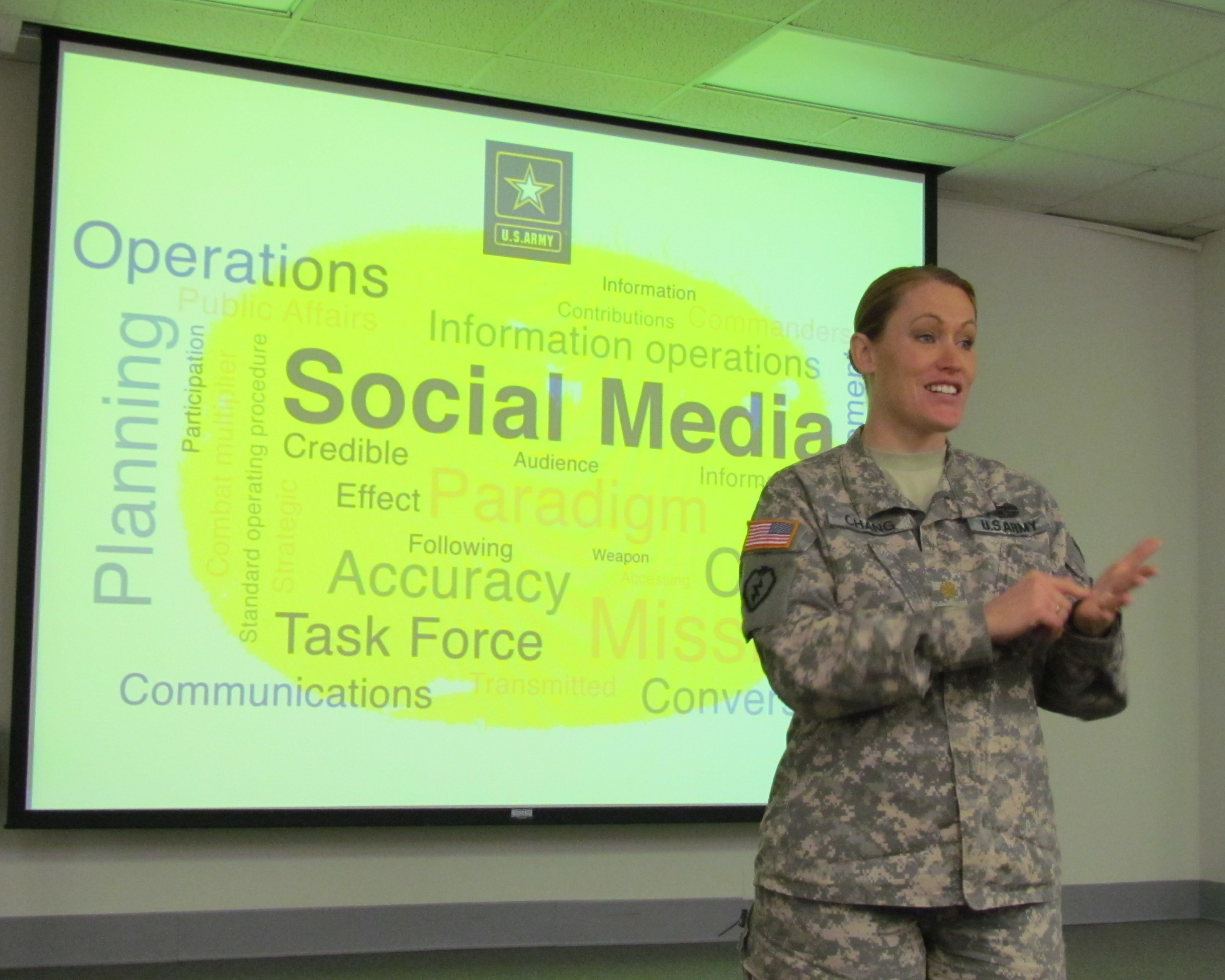
REDSTONE ARSENAL, Ala. -- Being the youngest division chief at the Office of the Chief of Public Affairs at the Pentagon often makes Maj. Juanita Chang stand out from the crowd.
But then isn't that what you would expect from someone working on the cutting edge of the Army's social media activities'
Yet, Chang is quick to point out that social media - including websites as well as social online sites such as Facebook, Twitter, YouTube, and Flickr -- isn't just for the "younger generation." In fact, statistics show the fastest growing social media demographic belongs to women between the ages of 55 and 70. In the Army, social media is a growing tool for keeping in touch with members of the military network, communicating command messages and connecting with the public.
No matter a person's age, gender or race, social media is for everyone and it's here to stay, Chang said.
Speaking to a gathering of Army public affairs specialists Feb. 2 at a Social Media Workshop hosted at Redstone Arsenal by the Army Materiel Command, Chang discussed how public affairs offices can use social media to their advantage at reaching key audiences.
"In your social media plan, you need to have a goal," the director of the Army's Online and Social Media Division said. "Numbers mean absolutely nothing if you are not reaching the people you are trying to influence ... We have to work on strategically reaching the people you want to impact."
Chang manages the Army's official public-facing website, www.army.mil, as well as the Army's social media accounts. Army.mil is the largest website within the Department of Defense, averaging 4 million page views per month. The Army.mil website includes links to websites for the Army's commands, agencies and organizations. Team Redstone has a presence on several of those websites, including www.army.mil/amcom; www.army.mil/amc; www.army.mil/usasac; www.army.mil/acc and www.army.mil/amrdec.
In addition, Chang manages the Army's social media platforms to include the Army's official Facebook page - The U.S. Army -- with nearly 600,000 fans, and adding more than 1,000 fans per day. It is second only to the Marines' Facebook page, which has 900,000 fans. Other social media platforms include the Army's Twitter, YouTube, and Flickr sites as well as the Army Live blog.
In February 2010, the Army opened its networks to social media, allowing its employees and Soldiers to visit social media sites on their at-work computers. That one-year directive memorandum will be extended this month and made permanent.
"Social media changes our operating environment," Chang said, by increasing the speed and transparency of information, determining which events make news and which do not, and setting agendas and influencing public opinion.
Social media allows the Army to get out front in the public online arena with its command messages. It allows the Army to disseminate information, gather public sentiment, connect Soldiers, civilians, retirees, family members and others through an online community and build the esprit de corps within that community.
Chang said public affairs specialists should synchronize messages through various social media. By planning ahead, daily themes can be chosen and then the messages in support of those themes can be posted on various social media outlets.
Of course, opening the Army to social media does come with security concerns. Chang said, as a general rule, people shouldn't post information on a social media site that they wouldn't "put on a sign in their front yard." Army employees should also guard against releasing any classified information on a social media platform that could be of value to the enemy.
Chang's staff is constantly checking social media platforms to ensure that only the official Army presence is seen by the public. In particular, they monitor and work closely with Facebook to remove fake profile pages of Army leaders and with Wikipedia to remove false information pertaining to the Army.
The Office of the Chief of Public Affairs has available to anyone a social media handbook that provides guidance in managing social media platforms.
"Social media isn't any different than acting in a formation or talking on a cell phone. The important thing is to ensure against the leaks of vital information. Soldiers are trained on what they can put out there and what they can't," Chang said.
"So far, there have been no cases of sensitive information being leaked on social media sites. Education is the key to everything we do in the military, and that includes operational security for social media. We would be remiss to not address security for a social media platform."
Installations such as Redstone Arsenal are home to valuable technical information that would be valuable to the enemy, the major said.
"Security of that information is important. We have to be responsible for what we put out (on social media sites). We have to be responsible for security," Chang said. "We have to make sure we don't put out there anything that could give the enemy an unfair advantage."
That need for security must also be weighed with the need for allowing military personnel to engage in social media.
"Our military is unique because it is connected with an audience and with our communities," Chang said. "We are part of our communities and to stay in touch with those we've met we use social media. Opening access is a morale booster ... and it's important to us to be transparent to the taxpayer through social media."
Related Links:
AMC Social Media Conference provides guidance, best practices for Soldiers, civilians & families

Social Sharing